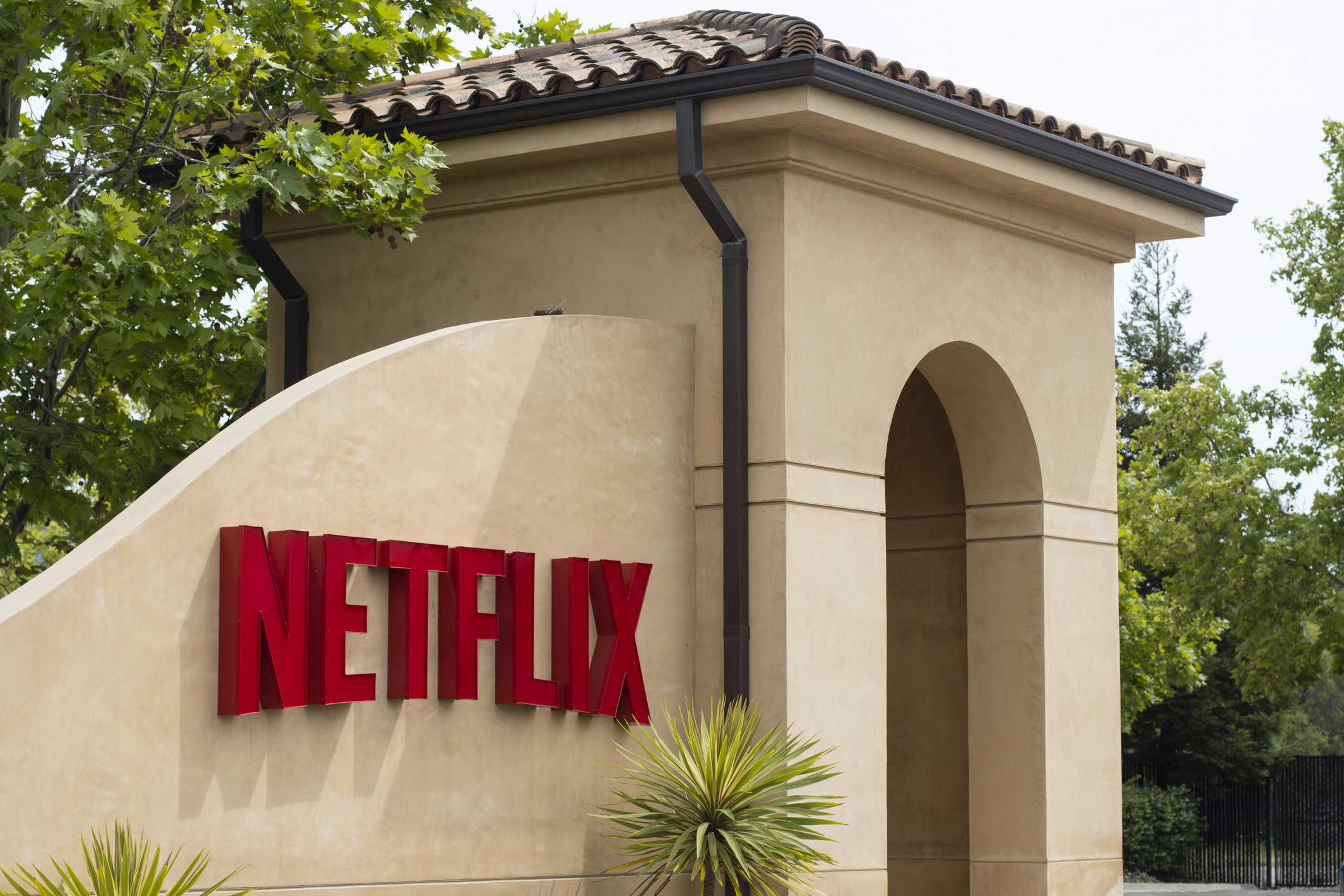
iStock.com/hapabapa
Has Netflix’s Value Moved Well Beyond Subscriber Growth?
In a shock to Wall Street, Netflix plans to stop reporting quarterly subscriber numbers starting in 2025, believing the metric has lost its relevance in judging the health of a platform.
Netflix’s stock performance has long been linked to subscriber gains or losses.
In a letter to shareholders along with first-quarter earnings, the streamer king sought to reorient investors toward time-spent-viewing metrics where it has more potential upside in the years ahead. Netflix’s decision to prioritize profit, revenue, and free cash flow over subscriber numbers is also made possible by its strong financial performance compared to legacy media companies.
“As we’ve noted in previous letters, we’re focused on revenue and operating margin as our primary financial metrics — and engagement (i.e. time spent) as our best proxy for customer satisfaction. In our early days, when we had little revenue or profit, membership growth was a strong indicator of our future potential. But now we’re generating very substantial profit and free cash flow (FCF). We are also developing new revenue streams like advertising and our extra member feature, so memberships are just one component of our growth,” the letter said.
The company continued, “In addition, as we’ve evolved our pricing and plans from a single to multiple tiers with different price points depending on the country, each incremental paid membership has a very different business impact.”
On an analyst call, Co-CEO Greg Peters elaborated that with Netflix’s advertising plan, higher engagement is tied to higher revenue per member, as opposed to the fixed per-sub revenue on the plans with no ads. He also noted that under the platform’s paid-sharing initiative, primary account holders are able to add an “extra member” for an incremental monthly fee, but those “extra members” are not counted as separate subscribers.
Netflix is also investing in areas such as live programming, including sports, as well as in video games to drive engagement.
Netflix also won’t be reporting average revenue per member (which it dubs “ARM”) as of Q1 2025.
“We’ve evolved and we’re going to continue to evolve,” said Peters. He added, “That historical simple math that we all did, number of members times the monthly price, is increasingly less accurate in capturing the state of the business.”
Netflix will still announce subscriber “milestones” but nothing on a regular basis.
Netflix announced the change while reporting quarterly results that handily surpassed Wall Street expectations for earnings, sales, and subscriber growth. Continuing to benefit from its move to police password sharing, subscribers grew by 9.33 million in the period, reaching 270 million globally. The outperformance also reflects a strong response to new ad-supported streaming plans, which now account for 40% of all sign-ups.
Still, shares of Netflix dropped 9.1% on Friday on fears that the move to end reporting quarterly subscription totals was a signal of slower growth in the coming quarters. Other technology giants, such as Facebook parent Meta and X, formerly Twitter, stopped reporting monthly active user numbers as growth slowed.
“While still early, the potential concern is subscriber growth had significantly decelerated in 2022 (prior to the implementation of Netflix’s password sharing crackdown]),” Bank of America analyst Jessica Reif Ehrlich wrote in a note to clients. “This could be a harbinger of decelerating subscriber growth in the future.”
Among competitors, Disney, Warner Bros. Discovery, and Paramount Global have all reported weak subscriber growth recently. Apple and Amazon have never offered quarterly subscriber information for their streaming services.
Estimates of Amazon Prime’s growth are still often used to measure Amazon’s stock valuation. Costco, Spotify, Chewy, Wayfair, Warby Parker, and Stitch Fix are among other firms that count subscriber or active customer growth among key investor metrics.
Discussion Questions
Do you agree that Netflix’s business model has become less reliant on subscriber growth?
Is the subscriber metric likewise less relevant for Amazon, Costco, and other more mature businesses?
